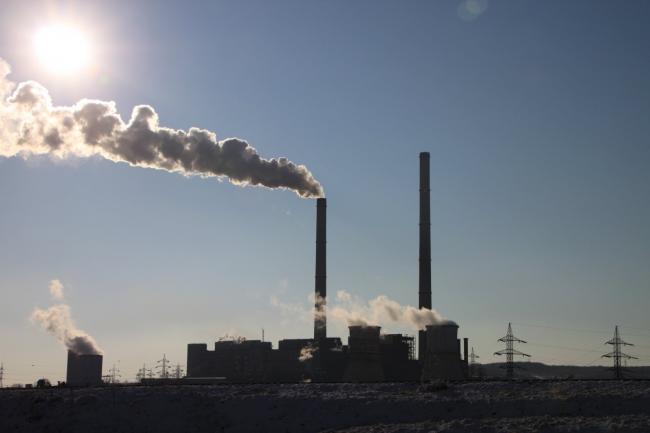Articles Menu

July 27th 2021
The past month has been a wake-up call for many Canadians as large parts of the country sweltered under an intense “heat dome” that is believed to have contributed to at least 719 sudden deaths in British Columbia.
Scientists have since concluded the heat wave would have been “virtually impossible” without climate change caused by the burning of fossil fuels.
The solution is clear. If we want to stop similar events, or worse, from becoming a regular feature of life, we must reduce fossil fuel consumption both here in Canada and around the world.
Canada, as a fossil fuel exporting country, has a crucial role to play in the global fight against the climate crisis. We must address the role our fossil fuel exports have in deepening the climate emergency. But until now, the full extent of that role has been hidden from Canadians by our government.
New data from Environment Canada — secured by Ecojustice — reveals just how rapidly Canada’s exported emissions are increasing. Ecojustice submitted a petition to the minister of environment and climate change requesting information on emissions from Canada’s fossil fuel exports since 2016. While Canada has stabilized its emissions at home, it is also exporting more emissions than ever before. Between 2012 and 2019, Canada’s exported emissions from the sale of oil, gas and coal increased an alarming 46.43 per cent.
Exported emissions are the CO2 pollution that is released when the fossil fuels Canada sells to other countries are burned. This differs from domestic emissions, which is pollution that enters the Earth’s atmosphere from within Canada’s borders. So, while Canada is making strides to reduce its domestic emissions, the impact of Canada’s exported emissions remains largely hidden and continues to rise unchecked.
After signing the agreement, Prime Minister Justin Trudeau famously announced to the world that “Canada (was) back” and ready to take up the fight against climate change. And yet, Canadian export emissions have done exactly what they did under Trudeau’s predecessors — they keep rising.
In 2019, Canada’s domestic emissions were 730 megatonnes (Mt) of CO2, while emissions from exported fossil fuels were 954 Mt. Cumulatively, in 2019, Canada’s total emissions were 1,684 Mt — more than the domestic emissions of the U.K. and Japan combined.
To date, Canada has been able to avoid scrutiny for its exported emissions. International agreements like the Paris Agreement only obligate countries to account for their domestic emissions. This has obscured the extent to which Canada has contributed to the rise in global emissions and deepened the climate crisis.
Part of the reason these emissions often go unnoticed is that the federal government does not account for fossil fuels exported abroad, nor does it show any intention of counting these emissions — let alone putting a plan in place to reduce those emissions.
While Canada has stabilized its emissions at home, it is also exporting more emissions than ever before, writes Fraser Thomson of @ecojustice_ca. #Ecojustice #cdnpoli #EnvironmentalJustice - Twitter
In the face of the climate crisis that is displacing, sickening and even killing people here in Canada and around the world, this is no longer good enough. We cannot continue the practice of committing to reduce domestic emissions while taking no responsibility for how Canadian exports are making the climate emergency worse. The atmosphere doesn’t care where carbon is emitted.
While aspiring to be leaders on climate change, Canada is one of the largest exporters of fossil fuels and the world’s third largest exporter of crude oil. The data provided by Environment Canada shows that in 2018, Canada’s exported emissions were 924.3 Mt, meaning there were almost 25 tonnes of greenhouse gases for every person in Canada. By comparison, in 2018 the United States’ exported emissions were slightly more than three tonnes per person.
From the Trans Mountain pipeline to Coastal GasLink, Canadian politicians continue to back fossil fuel projects that would see Canada export more emissions for decades to come. Over the past three years, federal and provincial governments have spent $23 billion to support oil and gas pipelines.
For the sake of a livable future, this has to stop.
The good news is that here in Canada, things are starting to move in the right direction. The federal government has set a tougher target for reducing domestic emissions, passed critical climate accountability legislation and made moves to phase out coal.
But none of this gets at the bigger problem Canadian governments seem reluctant to acknowledge. Climate action at home, while necessary, will be insufficient to address, or even begin to reduce, how Canadian fossil fuel exports are exacerbating the climate emergency globally.
Canada can choose to stop making things worse. It should. The formula is simple: Count exported emissions and take responsibility for them by reducing fossil fuel exports.
If we don’t account for what we put out into the world, we know what will happen. These emissions will come back to haunt Canadians in the form of scorching heat waves, disastrous flooding and choking wildfires in the years and decades to come.
Fraser Thomson is a lawyer at Ecojustice whose work mainly focuses on the impact of fossil fuel operations on communities and the environment.
[Top photo: We must reduce greenhouse gas emissions both here in Canada and around the world. Photo by Pikrepo]